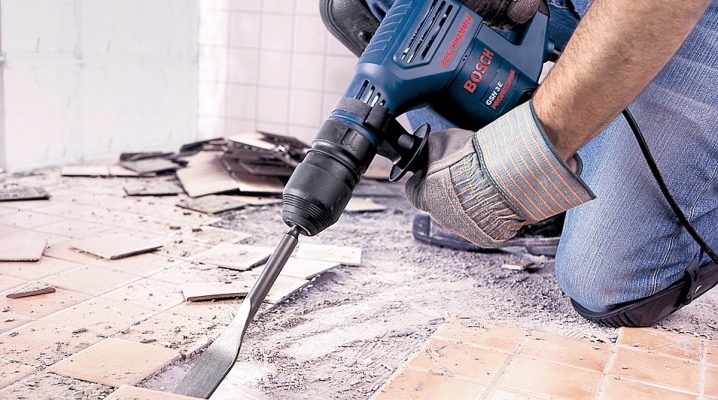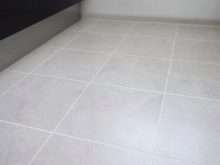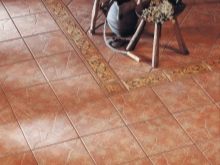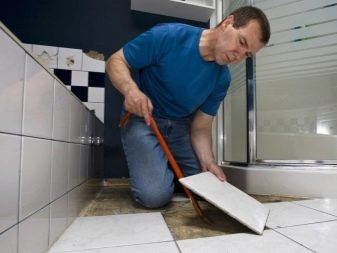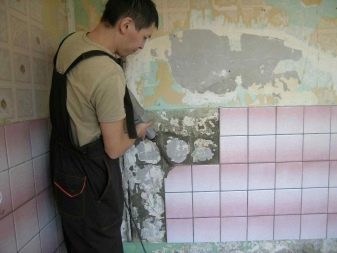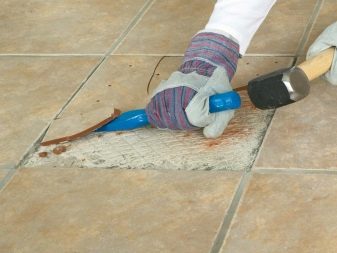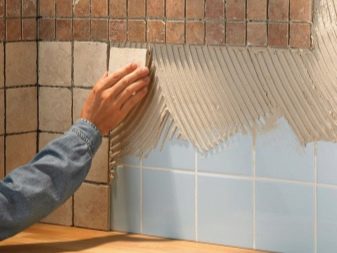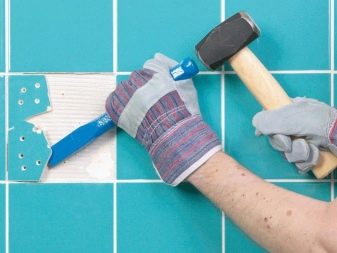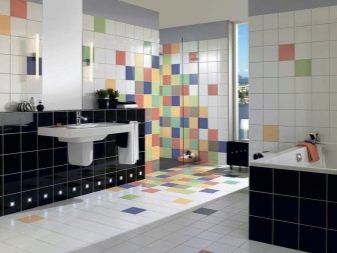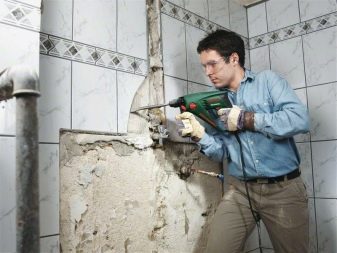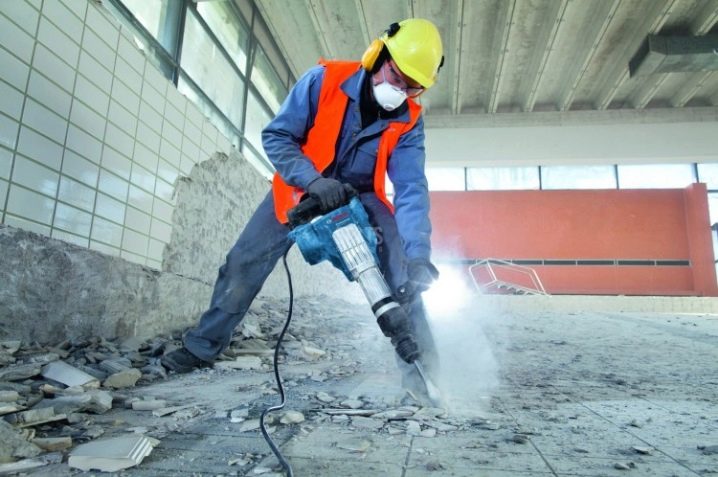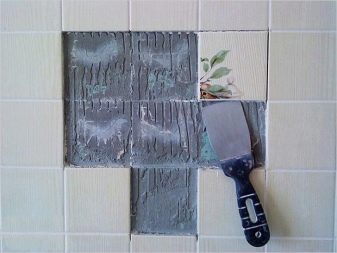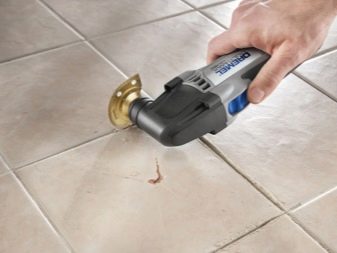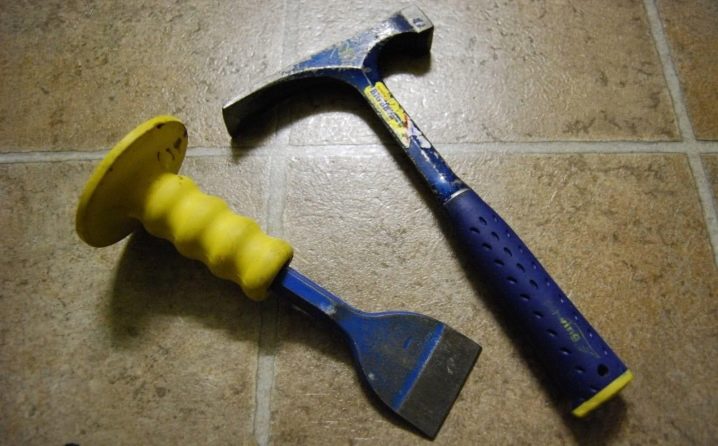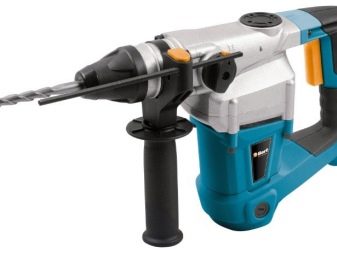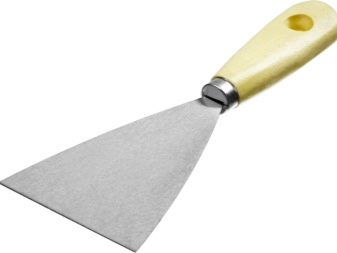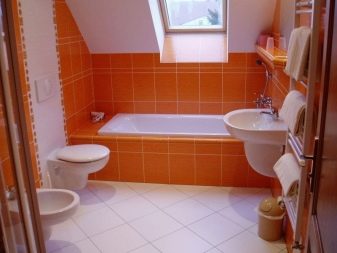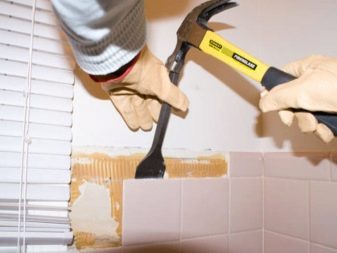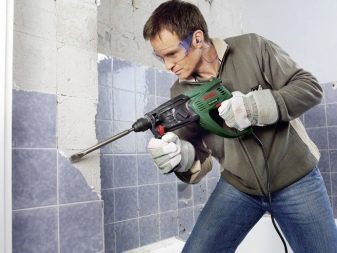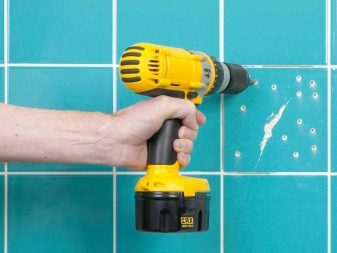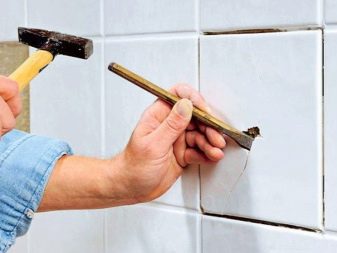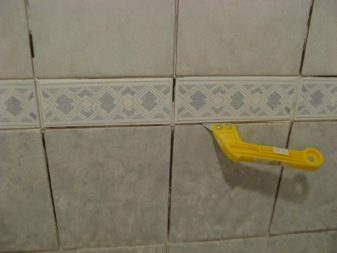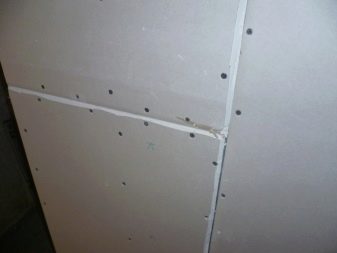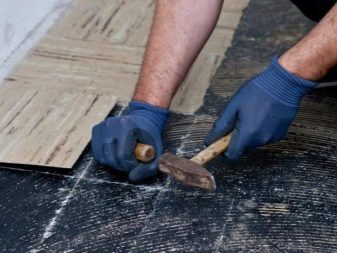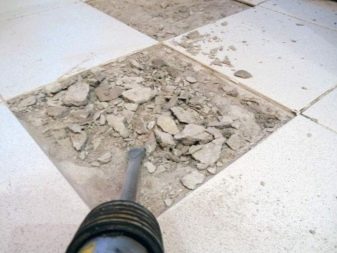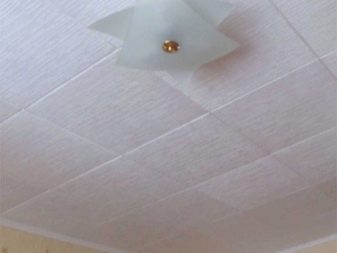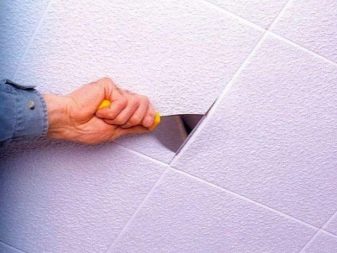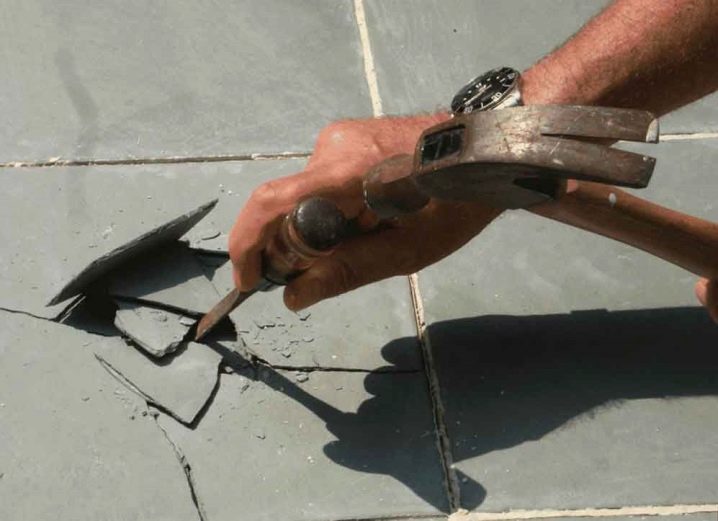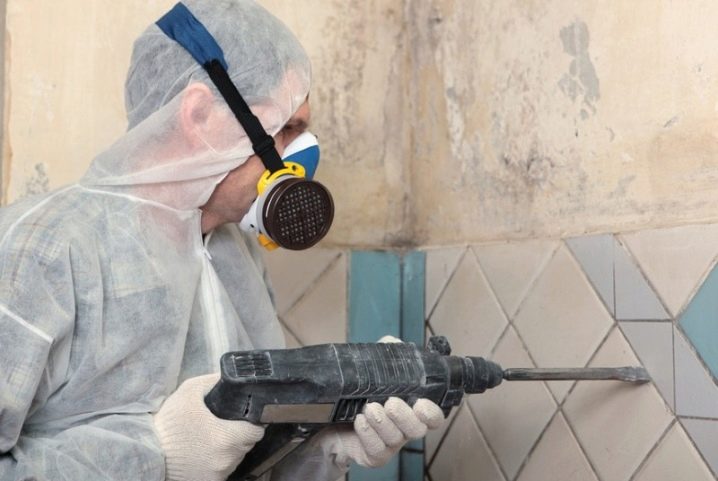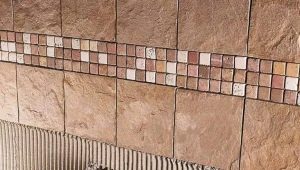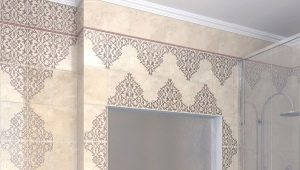How to make dismantling tiles?
Even redecoration almost always involves removing the old finish as a first step. If in the case of wallpaper on the walls and linoleum on the floor, this procedure does not seem so difficult, the tile can be a serious obstacle, significantly complicating the task.
At the same time, humanity is unlikely to give up tile as a material for finishing literally everything - the floor, walls and ceilings, because its service life exceeds all expectations, and even the high cost does not stop consumers buying it. However, even the tile sometimes requires replacement, so you should figure out how to organize the process of its removal.
Special features
The technology of removing the tile strongly depends on what end result the consumer needs. If the tile is rather worn out and is hardly suitable for something else, then there are no special requirements for the accuracy of dismantling - the wall under the masonry will not remain even as you do not try.Another thing is that sometimes the owners see the point in preserving the old tile, if it looks pretty good. In such a situation, it can be reused, provided that a significant amount of slabs is preserved intact.
It cannot be said that the use of an old tile will make an amazing repair elsewhere, however, this solution will be very practical for a garden or a garage.
At the same time, there are some types of masonry, which can not be carefully removed simply - “thank you” for this you need to tell the master who laid the tiles so that she could serve her master as long as possible. For this reason should before starting the removal, gently knock the tile in different places with a hammer with a rubber nozzle.
A large number of voids, found under the surface of the tile, indicates the use of tile adhesive or not the highest quality cement masonry. In this case, you can try to save the shot finish. However, you should not immediately stock up on limitless optimism, because on average, losses amount to up to half of the entire tile.
If there are no voids, it is likely that the laying was made on a cement-sand mortar, and moreover carefully, which practically nullifies the hope of reusing tile.Good cement is not afraid of moisture and is able to function functionally for decades, and when it still loses its strength, then ceramics themselves can hardly boast of reliability.
It should be noted that tiled glue has become actively used only in the last couple of decades, and before that the master was limited almost exclusively to cement. This means that the old masonry without knock-on voids should not even be carefully disassembled, because the number of losses will approach 100%.
Methods
The method of removing the tile is divided into two types - neat and careless ways. It is worth starting with the second, because they require less skill and can be produced in the shortest possible time.
It is possible to do the tile removal in an inaccurate way on your own, because it does not imply any rules, except strict adherence to safety rules.. However, for such a dismantling, it is likely that brute force will be needed - you will have to hold at least a working punch in your hands or knock down a tile manually with a hammer and chisel.
Naturally, the first option is somewhat more practical - it will not be possible to avoid a terrible noise, however, the battle will be carried out without much effort and in the shortest possible time.Manual churning should be left except for those cases where the owner does not have a punch and there is no place to borrow it, because such a procedure is much more tiring, and will take a lot of time, although the result will be the same.
It should be understood that the dismantling of the tile in any case implies the presence of protective ammunition, and if the interior renovation is carried out also by a rough method, then a full-fledged costume is simply necessary.
It involves the maximum closure of the entire surface of the body, including thick shoes, thick gloves, goggles and a respirator. Even the correct direction of impact on each tile cannot guarantee that a breakaway piece of tile or mortar does not please the sharp end of the master, and the construction dust, when performing such works, is an essential attribute.
As for careful removal, its technique varies much more - the choice of specific means depends on several factors, including the position of the tile (on the walls, floor or ceiling), its size and thickness, and the basis on which it was planted. (solution or glue).
What to shoot?
Professional repair foremen need all the necessary things, but a person who has decided to repair the house on his own will need advice on the tools needed in the process.
In preparation for the start of work, it is advisable to have at your disposal, if not the entire list, then at least most of these things:
- Hammer. Not everyone has a puncher at home, but every self-respecting man probably has a hammer. This tool is useful for rough and for the careful removal of the tile, because it can be called indispensable. If there are several hammers, it is better to choose a conditional average - both in size and in weight.
- Chisel or impact screwdriver. Since the main focus is on doing the job manually, then there must be a tool with a hammer that you need to beat with this hammer to pick off each individual tile.
As practice shows, the wider the choice of such tools, the more opportunities for accurate removal of tile.
- Perforator. First of all, it is necessary for those who do not want to keep the tile intact, but even for thrifty owners it will be needed if the laying in certain places sits too firmly.Such a tool should have a set of various special nozzles - chisels and bits, spikes and drills.
- Construction knives and narrow durable spatulas. These tools will significantly simplify the process of carefully removing the tile, because they can crawl under each individual tile if the solution holding it is already partially crumbled.
- Chisel or grinder with a special nozzle. For coarse removal of the old finish, such devices are not needed, but they are simply necessary to reuse the removed tile. Such tools contribute to the careful removal of grout, which just prevents podkovyrnut tile in the right place.
Algorithm of work
You can dismantle the old tile with your own hands in different ways, but the choice of a specific method depends on the location of the tile and how it is fixed.
Most often it is necessary to remove from the wall the old tile without regard for its subsequent preservation. For this you must first secure communications - disconnect the electrical wiring in this room, and protect all the pipes in the room with a thick layer of soft rags.Removing tiled wall tiles most often occurs where it is laid - in rooms with high humidity, and there are always such communications, like plumbing, sewage, heated towel rail – all of them need to be properly protected. If the removal of granite tiles from the floor is not planned yet, it should also be covered.
Regardless of what tools you plan to use, you need to start from one of the corners of the top row. If you start at the bottom, there is always the risk that a huge fragment of several connected pieces will fall right on its feet, while the start at the top allows you to fight off no more than one piece of tile at a time. At the same time, it is not recommended to regret the first tile - it is unlikely to be able to be removed carefully, therefore it is possible to break it safely.
Further, the removal takes place either with a perforator or with a hammer and chisel; in the second case, the tiles can be torn off more carefully, however, this method is used little. If the installation was carried out qualitatively, so you can only peel off the tiles planted on the glue.
In the case of minor damage to ceramic tiles on the walls, you can replace only one or a few parts instead of a full replacement of masonry. In this case recommend removing the grout chisel and gently podkovyrnut desired fragment of tile chisel, trying to achieve detachment.
If this does not help, you will have to carefully break the tile and remove it in pieces. However, when using a quality mortar, even this may not help - then it remains only to cut the tile diagonally crosswise with a cutter, and then drill small holes along the lines with a drill. In this case, the tile will disappear in pieces, if you gently tap it with a hammer.
A huge problem is the removal of the facing tiles from the wall of plasterboard, because even a relatively neat hammer and chisel can break the plasterboard surface. As a rule, from such a wall the tile is more likely to be removed completely and neatly, but the wall itself cannot be saved.
It remains only to remove the tile with the utmost care with a hammer and chisel with the obligatory preliminary cleaning of the tile joints, and in those places where the integrity of the wall will be broken, perform minor repairs in the form of the imposition of a new sheet of drywall. Such a fragment is fixed with screws, and the gaps are sealed with a special putty.
Tiles on the floor can be attached not only to the concrete screed, but even to the previous floor. To begin with, the workspace needs to be cleaned from both furniture and dirt, and then tap tiles to determine the presence and location of voids.
A puncher will solve the problem quickly, but will require a mandatory floor leveling.The neat method involves breaking the corner plate and then prying the neighbors with a chisel. To achieve increased accuracy of the procedure, it is recommended to first wet the joints with water and remove the grout, and only then remove the tile itself.
In some cases, a well-laid quartz-vinyl tile can be so difficult to remove that it is more practical to install a new cover directly on top of the old one, but on condition that it remains safe.
For finishing ceilings, they usually use not tile, but foam tile, but this is not easy to say that it simplifies the task of removing it from the ceiling - the low weight contributes to reliable adhesion of the coating to the surface, which makes it impossible to remove the finish with whole fragments. If you try to remove the ceiling tile with your bare hands, you’ll get a huge amount of crumbs from foam plastic.therefore it is recommended to try to remove it with a spatula.
It is noted that a large amount of used glue virtually eliminates the method of removal with a spatula, therefore chisel and hammer come in handy here. The glue remaining on the ceiling is removed with a solvent. or it is preheated by an industrial hairdryer and then scraped off with the same trowel.
In some cases, when high-quality thick tile was used and good expensive glue for it, the most practical would be to refuse to remove the finish and install the stretch ceiling.
How to make dismantle of a tile, look in the following video.
Tips and tricks
Finally, you should give some more tips that will make the disassembly of the tile quick and practical:
- Consider possible methods for removing tile long before the start of work. To do this, determine whether you need an old tile for further use and whether it is possible to remove it at all without damage. It should be noted that when using a cement-sand mortar, even a completely broken tile is unlikely to be useful for subsequent re-assembly.It will necessarily have protrusions of cement on the reverse side, and to level it after removal, without splitting and breaking, just will not work.
- In all instructions it is recommended to protect all fragile surfaces, including pipes and even plumbing with dense rags, but it should be noted that large and sharp pieces of tile can damage even the paint on the walls. This is especially true of oil paint, as well as other types of dyes that form a dense, well-marked layer. Sometimes it is necessary to choose a neat way of dismantling, not so much to save the old tile, as simply to avoid the need to re-repair the entire room.
- The risk of injury during the dismantling of the tiles is very high - this will confirm any professional in this field. In no case should the instructions be disregarded, in particular, the use of a full protective suit is strictly necessary, and no details of it can be excluded; if they are not there, it is better to purchase them than to be treated later.
